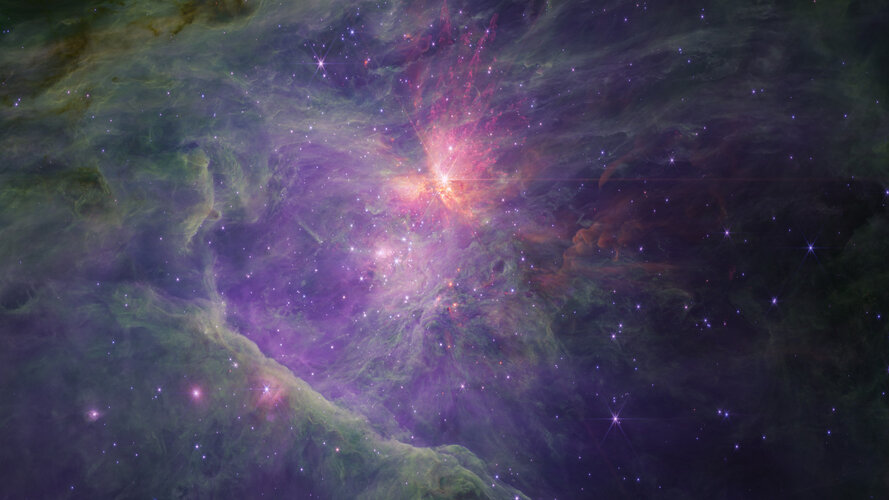
This image shows the full survey of the inner Orion Nebula and Trapezium Cluster made using the NIRCam instrument on the NASA/ESA/CSA James Webb Space Telescope. This is the long-wavelength colour composite, which focuses on the gas, dust, and molecules in the region with unprecedented sensitivity in the thermal infrared.
The cavity is mostly filled with ionised gas, seen here in purple, while the surroundings have a mix of dust and molecular gas seen in reds, browns, and greens. The Bright Bay to the upper left is being eroded by the massive stars at the centre of the region and there are many pillars of gas and dust which are being carved.
This young star-forming region is just a million years old and contains thousands of new stars spanning a range of masses from 40 down to less than 0.1 times the mass of the Sun. The most massive and hottest stars in the region, notably the Trapezium in the centre, have sculpted a cavity in the surface of the giant molecular cloud from which they were born, which can be readily seen in this image.
The Orion Nebula lies roughly 1300 light-years from Earth in the so-called ‘sword’ of the constellation of Orion the Hunter, and the image shows a region that is 4 by 2.75 light years in size.
Image description: An image of a young star-forming region filled with with wispy purple, green, and red nebulosity. The purple ionised gas is seen mostly towards the centre, with browns, greens, and reds behind, while the periphery is mostly bright green and darker brown to the left. There is a large spray of yellow, orange, red, and purple towards the top centre, and the nebula fades to near black to the right. There are thousands of stars sprinkled across the field, concentrated towards the centre, but they generally appear fainter at longer wavelengths, with some exceptions. The brightest sources in the field have extensive diffraction spikes characteristic of Webb.
Click here for original story, Orion Nebula in NIRCam long-wavelength channel
Source: ESA Top Multimedia